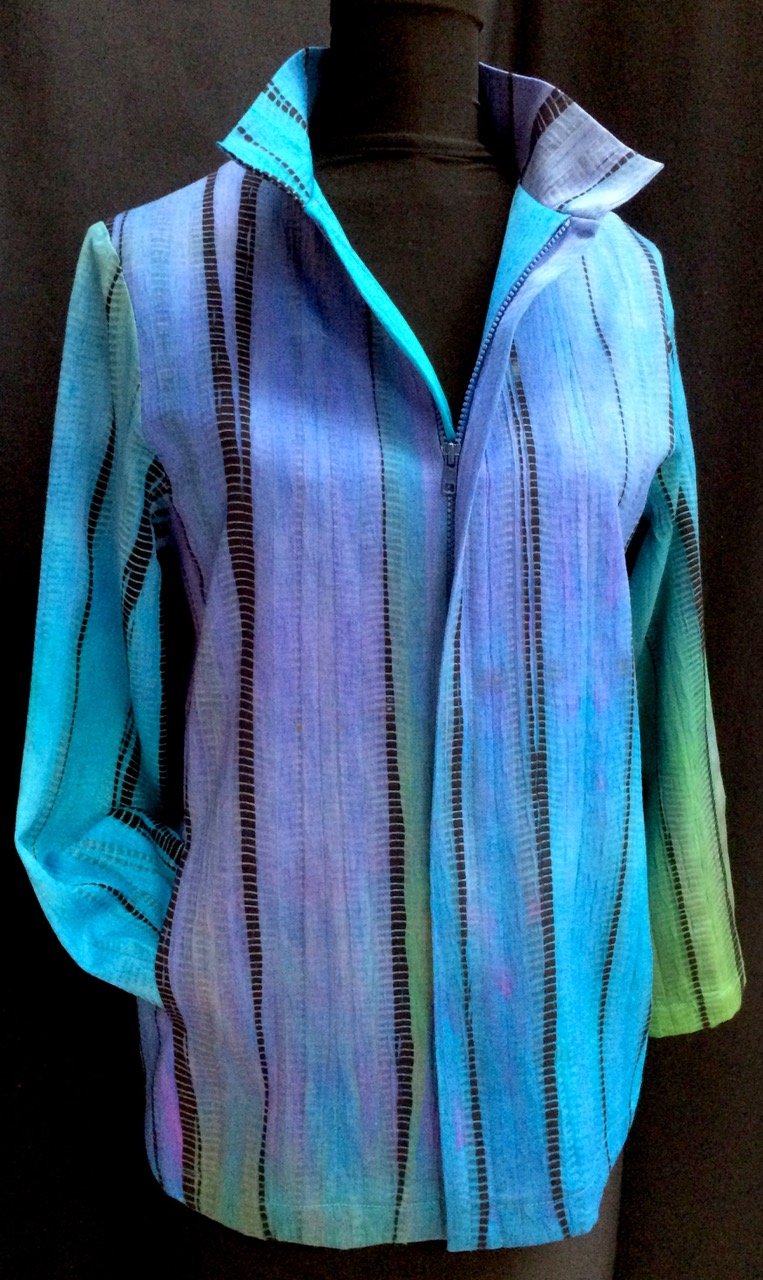Calendar of upcoming events.
Click on the Image for more Info

Depth and Mystery in Shibori with DOSHI
With Shibori the dyer works in concert with the materials, not to overcome their limitations, but to allow them full expression. An element of the unexpected is always present. Chance and accident give life to the Shibori process, contributing to its special magic, appeal, and individual expression.
We will explore several methods of enhancing the fabric; creating depth and mystery through color and texture, and increasing the complexity of imagery and pattern.
various methods of shaped resist
layering resist techniques
adding color through pour dyeing and immersion dyeing
discharge
We will also look at color—inspiration, choosing, and mixing—with acid dyes on a variety of silk fabrics. Layering color upon color adds visual depth and allows the fabric to vibrate visually.

Interaction! Shibori Indigo Over Color with Carol Anne Grotrian
Experience the excitement of dyeing indigo patterns over color. Results can range from dramatic to subtle, with a bonus when the interaction of indigo and fiber-reactive dyes creates interesting haloes of color. The class will include instructions on mixing fiber-reactive colors and using an indigo vat and various Shibori techniques. There will be lots of time to create beautiful, unique fabrics as students team up to create solid colors that everyone can overdye in indigo shibori patterns.
While it is NOT required, students are encouraged to come up with a project in mind, such as a wall hanging, quilt, garment, or other textile.
No experience is necessary; experienced dyers are welcome.

Natural Dyeing Seminar : Classical Natural Dyes Created in Modern Setting
Natural Dyeing of the 18th Century, in a Modern Setting: Classical Natural Dyes at your Fingertips
Create stunning colors from plans, inspired by the recipes of the old masters, adjusted to fit a modern dye kitchen.
Day one:
On the first day, you learn about the systems and economics of the 18th-century natural dye industry. Specifically in the South of France, which was the leading economic force of that century.
We learn about the master dyers of the era and their recipe books.
Practical instructions:
Correct cleaning of natural fibers
Water ratios
WOF calculations
Record keeping and building a library.
Practice and test: cleaning the materials you will be using for the rest of the trials.
Color: Learn how to set up an indigo bath
Day two
We will dye base colors of different shades of blue according to 18th-century shade cards.
milky blue
azure blue
Kings blue
You will learn how to dye correctly, and how to maintain your vat for continued dyeing.
You will learn about the mordanting process for wool, and we will mordant part of our fabric for the following steps.
Day three
The yellows
You will learn a classical mordant bath for our wool fabric.
We will create a classical weld dye bath and a buckthorn berry bath and dye our yellow samples.
We will create
Lemon Yellow
Warm Yellow
Vert Gay (cheerful Green)
Vert d’Herbe (herb green)
Day four
Going all out with Madder and Cochineal
Today you will learn how to create vibrant reds with madder
We will create Purples by over-dyeing our blue samples
We will create ORANGE by over-dyeing yellow samples
Madder red
Scarlet red
Golden Cinnamon
Violet
Lila
Day Five
Greys, taupe and more.
Learn how to reuse your dye baths and combine them with mordants to create even more stunning shades.
We will finish our dyeing and collect and cut all the samples to make your sample collection for future reference.

Lisa Binkley Workshop
Dyeing with plant pigments has been practiced for as long as humans have made cloth and wished to beautify it. Printing with plants has been practiced for generations through such
traditions as Easter egg adornment and in the past few decades as a way to adorn fabrics.
During this five-day workshop, students learn about the history of dyeing and printing with plants; how to prepare fabric for dyeing and printing; ways to secure and alter botanical dye color on cloth; and many ways to get patterns and images on fabric with plants.
During the first three days, we will use a variety of local plant materials as well as other botanical dyes to create color and patterns on our fabrics. We will focus on printing plant material onto fabrics; dyeing solid and mottled colors with botanical pigments; printing and dyeing together; and using some shibori techniques in conjunction with botanical printing and dyeing.
During the fourth and fifth days, students will learn and practice hand piecing, contemporary applique, and hand-stitching/quilting techniques suited to these fabrics. They will then use their recently dyed fabrics to begin an art quilt, art fabric panel, or garment.
https://ayafiberstudio.corsizio.com/event/65eb33a1f69a5a52a3db5792